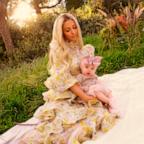GMA:More Young Women Getting Breast Cancer
April 17 -- Janice Bonadio was just 27 when she was diagnosed with breast cancer, a disease she thought only struck older women.
Funny thing was, she discovered the lump in her breast almost on a lark after she read a story in a magazine about self-exams then decided to give it a try. Convinced that other young women might also be in the dark about their risk factor, Bonadio founded the Big Bam! Foundation a year after she was done with breast cancer treatment.
The fundraising group is aimed at informing young women and the public about a growing concern that breast cancer is striking more women under 40. It also helps young women without insurance pay for mammograms and raises money for cancer research.
Why worry so young? Big Bam! says younger women tend not to believe that breast cancer could strike them so young, and hence the cancer tends to go unchecked until it is far along.
About 192,000 women are expected to develop breast cancer this year, but the number of younger women contracting the disease are still relatively small, according to the American Cancer Society.
The incidences of breast cancer are one in 225 in women under 39. The rate rises to one in 24 in women ages 40 to 59 and one in 14 in women ages 60 to 79. The chances of developing breast cancer over a lifetime are one in eight, the American Cancer Society says.
Even though more women in their 50s get breast cancer, young women are more likely to either need a mastectomy or die from it, said Dr. Rache Simmons, a breast surgeon at Strang-Cornell Breast Center in New York. .
"And not only are women unaware, so are their physicians," Simmons said. "I'm a cancer specialist, and I can't tell you how many times I've heard women say they were told by their doctor that a lump was nothing or that they were too young to have breast cancer, only to go to a specialist and find out that they had stage two cancer or worse."
Hitting College Campuses
Big Bam! has been offering its literature on college campuses, with a youth-oriented breast cancer awareness campaign that uses brightly colored ads and eye-grabbing graphics. The goal is to get young women in the habit of doing self-breast exams .




